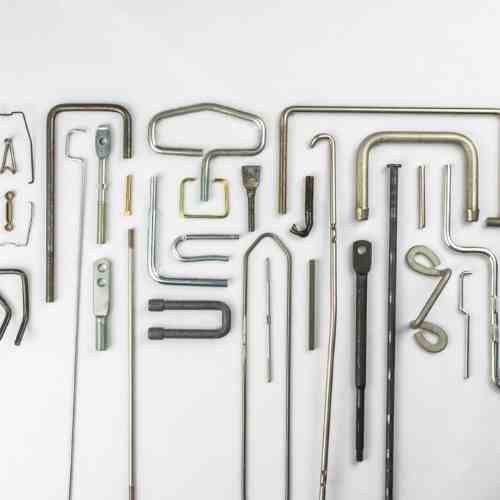The Complete Guide To Wire Forms Applications And How To Use Them
Wire forms are helpful for numerous applications. It’s worth taking a look at the standard versions that remain popular.
What Is A Wire Form?
A wire form is a three-dimensional shape created by bending or twisting a single piece of metal wire. Wire forms have various uses, including producing everything from simple hooks and hangers to complex springs and other mechanical parts used in diverse industries.
Companies can make wire forms from almost any type of material, including steel, stainless steel, aluminum, brass, copper and bronze. If weight or corrosion resistance is a factor, exotic metals such as titanium are available.
At BCEPI, we can create wire forms in diameters ranging from .016 to 1.00″. The wire size used to create a wire form will depend on the intended application. If your application meets this criteria, contact one of our team members for more information.
Wire Forms Have Advantages
In addition to their versatility, wire forms have several other advantages over other types of metal shapes. For example, companies produce them quickly and with a high degree of accuracy. You can also customize wire forms to meet the specific needs of an application.
Now that you know a little about wire forms let’s look at some of their most common applications.

Wire Handles and Large Wire Applications
Wire handles are popular in applications where a robust and durable grip is needed. Examples include door pulls, garden tools, foundation anchors, and D-rings.
Wire Form Applications
Hooks and Hangers
One straightforward application for wire forms is creating hooks and hangers. You can use wire forms to create different designs, from small coat hooks to large industrial models.
Hooks and hangers are usually steel or stainless steel wire. The dimensions and type of wire used will depend on the intended application. For example, a small coat hook might be made from .125 wire diameter, while you might make a sizeable industrial hook from .500 wire diameter.
Coat, key, and towel hooks are typical household applications for wire forms. In the industrial world, wire forms create hangers for tools and parts to heavy-duty lifting hooks. At BCEPI, our expert team helps you find the products you need.
Springs
Another common application for wire forms is creating springs. Springs benefit many applications, from small mechanical parts to sizeable automotive suspension systems.
Springs use high-carbon steel wire. The wire type depends on the application and the desired spring rate. For example, a spring used in a small mechanical part might be made from music wire, while you might make a spring used in a car suspension system from an oil-tempered wire.
Wire forms create all sorts of different springs, including tension springs, torsion springs, and leaf springs. They are the most common type of spring and help for applications where something applies a force to stretch the spring. For example, torsion springs help apply pressure to twist the spring. Leaf springs are in automotive suspension systems and heavy-duty applications.
Clips and Clamps
You can also use wire forms to create clips and clamps. Clips and clamps hold things together or keep things from moving.
Clips and clamps use steel or stainless steel wire. The size and type of wire used will depend on the application. For example, a small paper clip might be made from an 18-gauge steel wire, while a large hose clamp might be a 12-gauge stainless steel wire.
Paper clips, binder clips, and clothespins are just a few of the typical household applications for wire forms. In the industrial world, wire forms create everything from hose clamps to pipe clamps.
Blue Chip Engineered Products Knows Wire Forms
For nearly four decades, our team of wire forms experts has been helping customers find the right parts for the job.
Trust us to assist you with finding the wire form products for your applications and needs. Our client base has consistently expanded since 1984 because of our service following the sale. So bring your challenges to our team, and we’ll help you with solutions.
